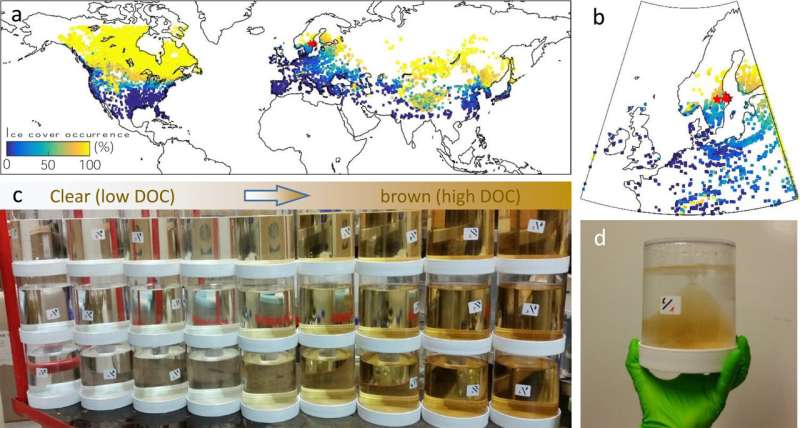This article has been reviewed according to Science X's editorial process and policies. Editors have highlighted the following attributes while ensuring the content's credibility:
fact-checked
peer-reviewed publication
trusted source
proofread
How lake ice formation influences transformation of dissolved organic matter

Dissolved organic matter (DOM) is the main form and active component of natural organic matter in lakes. Microbial- and photo-degradation of DOM can release large amounts of small molecule organic acids and biogenic substances.
During the growth of lake ice, a DOM fraction is expelled from the growing ice crystal junctions into the underlying unfrozen water column, another DOM fraction may be trapped in the ice, and the rest DOM fraction may be flocculated and deposited as particulate organic carbon.
Researchers led by Dr. Zhou Yongqiang and Prof. Zhang Yunlin from the Nanjing Institute of Geography and Limnology of the Chinese Academy of Sciences, along with their collaborators, have investigated how lake ice formation influences DOM partitioning among the lower unfrozen water column, the upper lake ice layer and the particulate form, as well as the variability in the molecular composition of DOM and the driving mechanisms.
Their findings were published in Geophysical Research Letters on Feb. 16.
The researchers found that during lake ice formation, 16.2 ± 4.7% of DOC was retained in the upper lake ice layer, 81.3 ± 5.7% was expelled into the lower unfrozen water column, and only 1.3 ± 0.7% flocculated as particulate organic carbon and sank to the lake bottom.
"Aromatic DOM was preferentially expelled into the underlying unfrozen water column. In brown water lakes with high DOC and aromaticity, DOM was readily expelled from the ice crystal junctions to the lower unfrozen water column," said Dr. Zhou.
Under global warming, inputs of nutrients and terrestrial DOM to lakes, as well as in-lake primary productivity will likely increase, which implies that both terrestrial inputs of aromatic DOM and endogenous production of aliphatic DOM will likely increase in the future. Lake ice formation may lead to a concurrent increase in expelling of aromatics from lake ice and aliphatics trapped by lake ice.
"A warmer climate implies that a large amount of lake ice will disappear during the winter half year and the duration of the ice cover will significantly decline, and thus the occurrence of internal ice-exclusion effects on organic matter will decrease," said Dr. Zhou.
More information: Yongqiang Zhou et al, Selective Exclusion of Aromatic Organic Carbon During Lake Ice Formation, Geophysical Research Letters (2023). DOI: 10.1029/2022GL101414
Journal information: Geophysical Research Letters
Provided by Chinese Academy of Sciences




















